Let us have a look at the traditional clothes of Malaysia and its different communities.
Malay
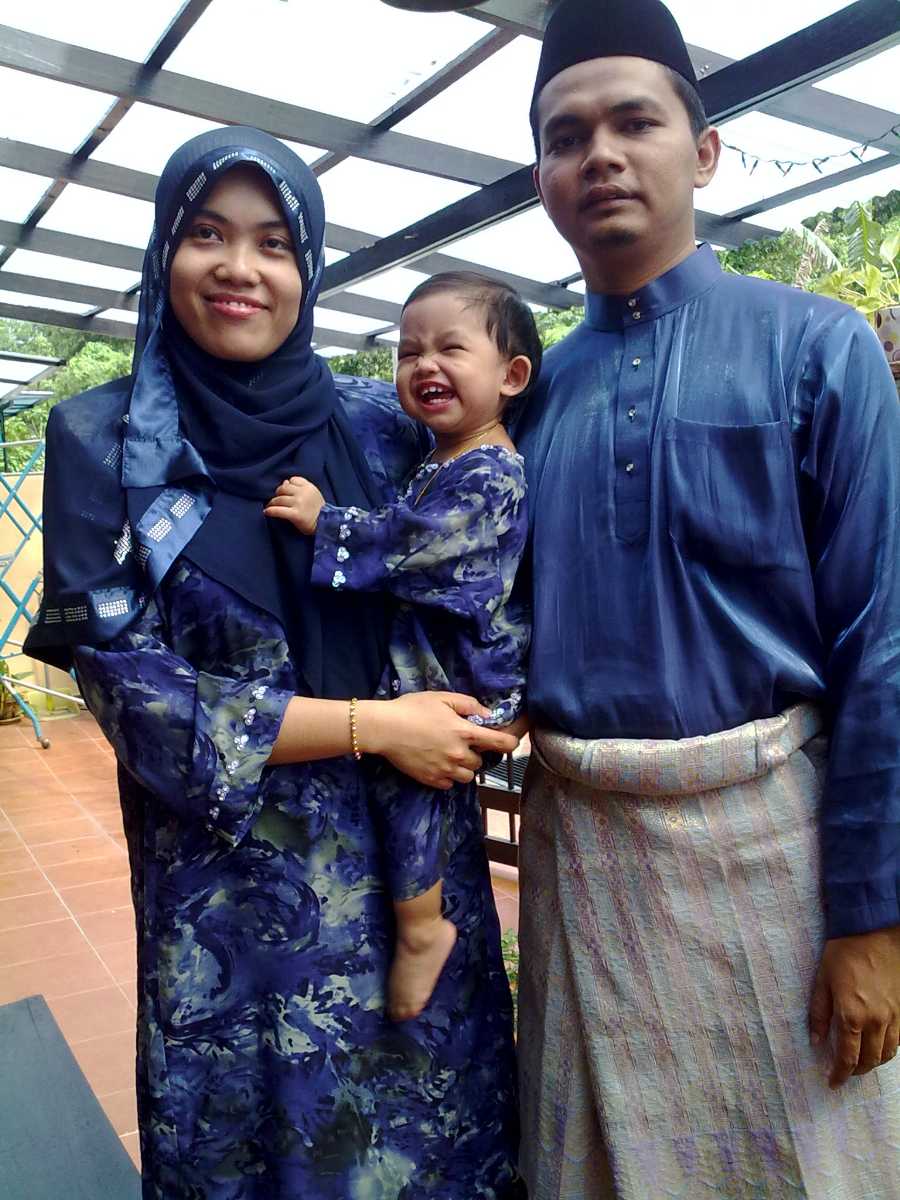
Malay is the most prominent ethnic group in Malaysia. Pakaian is the word for clothing in the official language. The traditional dress is different for males and females and is usually in bright and loud colours.
Men: The traditional attire of Malay men is called baju melayu, which is a loose tunic paired with trousers and a sarong which is known as sampin. Men also wear the traditional hat, called songkok or kopiah with it. Some men prefer wearing batik shirts with trousers.
Women: The ancient traditional dress for Malay women was kemban, which included sarongs tied above the chest. The current traditional dress for women is baju kurung, which comprises of a knee-length, full-sleeved blouse and a long skirt called kain. The skirt is pleated on one side. This attire is usually accompanied by a scarf on the head. A semi formal version is the kebaya, which is a skin-fit two piece costume.
Chinese
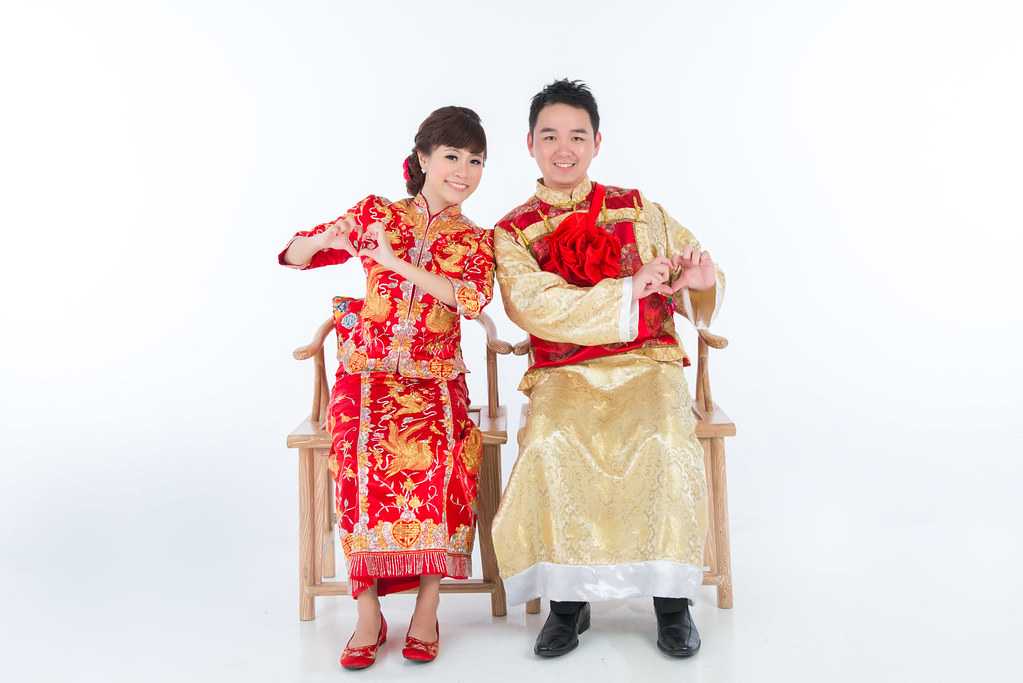
Most of the people from the Chinese community residing in Malaysia don’t dress traditionally. They prefer to dress casual. However, during festivals, specially the Chinese New Year, they are spotted in traditional outfits.
Men: Although rare, Chinese men in Malaysia wear their traditional dress called tang suit. Tang suit is a type of jacket that has a collar and a knot at the belly and is mostly floral. It has been named after the Tang empire, by overseas Chinese people. The name was suggested because the Tang empire was so powerful that the foreigners called Chinese “Tang people”.
Women: Chinese women in Malaysia wear cheongsam (means ‘long dress’) during festivals and formal events. Cheongsam, also called qipao, is a silk one piece dress with a collar and clasps at the waist, either in the centre or on the side. Elder women dress in samfoo, which is a type of ankle length pant with a loose fitted top with clasps at the centre. Another popular traditional outfit is worn by Chinese women in Malaysia is hanfu, which is a combination of a loose blouse and a long skirt and a belt sash.
Indians
Trade between Malaysia and India is quite smooth, because of which Malaysian Indians get a fair share of traditional clothes from their country. Thus, the Indians in Malaysia have stuck to their roots in terms of traditional dresses.
Men: Indian men in Malaysia wear kurta-pyjama, dhoti-kurta or lungi-kurta. Kurta is typically a knee length shirt. Another popular version of kurta is sherwani, which is worn during weddings and other festivals. Dhoti and lungi are types of baggy lowers.
Women: Most Indian women in Malaysia wear saree and blouse. Sari is a six yard piece of cloth, draped around the body in a way that it looks like a skirt with pleats in the centre and part of the same cloth covers one shoulder and hangs below till the knees. Some women also wear salwar kurta, which is a tunic worn with loose bottoms and long scarf called dupatta.
Apart from the above mentioned dominant communities, there are some minority communities residing in Malaysia as well. These groups also have specific traditional dresses. Some of these are discussed below.
Peranakan (Baba Nyonya)
Peranakans are Chinese immigrants who married Malays. They worship their ancestral gods and follow their original traditions, but have adapted to the culture of the Malays, including learning their language.
Peranakans, also called Baba Nyonya, dress in baju panjang. Baju panjang is a long dress adapted from Malay’s traditional baju kurung. Baju panjang is a batik sarong worn with three kersang (brooches) and beaded slippers, known as kasot manek.
Kadazan
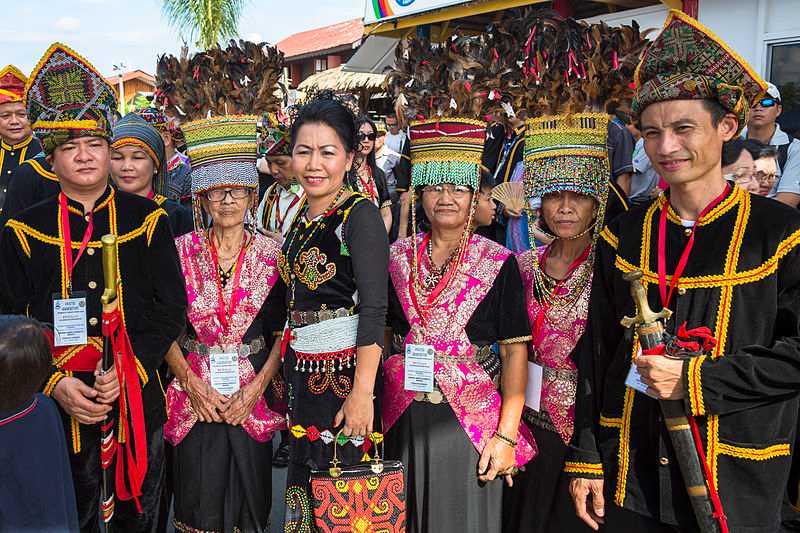
Kadazan is an indegenious ethnic group in Sabah, Malaysia. Their traditional attires are well conserved since their past
Men: Their traditional dress is a jacket with golden designs, worn with trousers and a headgear known as siga. The siga is made of handwoven destar cloth.
Women: Their traditional costume is known as papar and is basically an embroidered one piece made of gold thread along with a belt of silver coins. A headgear made of bamboo strips, known as siung, is also worn. This attire is usually made from black velvet or silk.
Iban
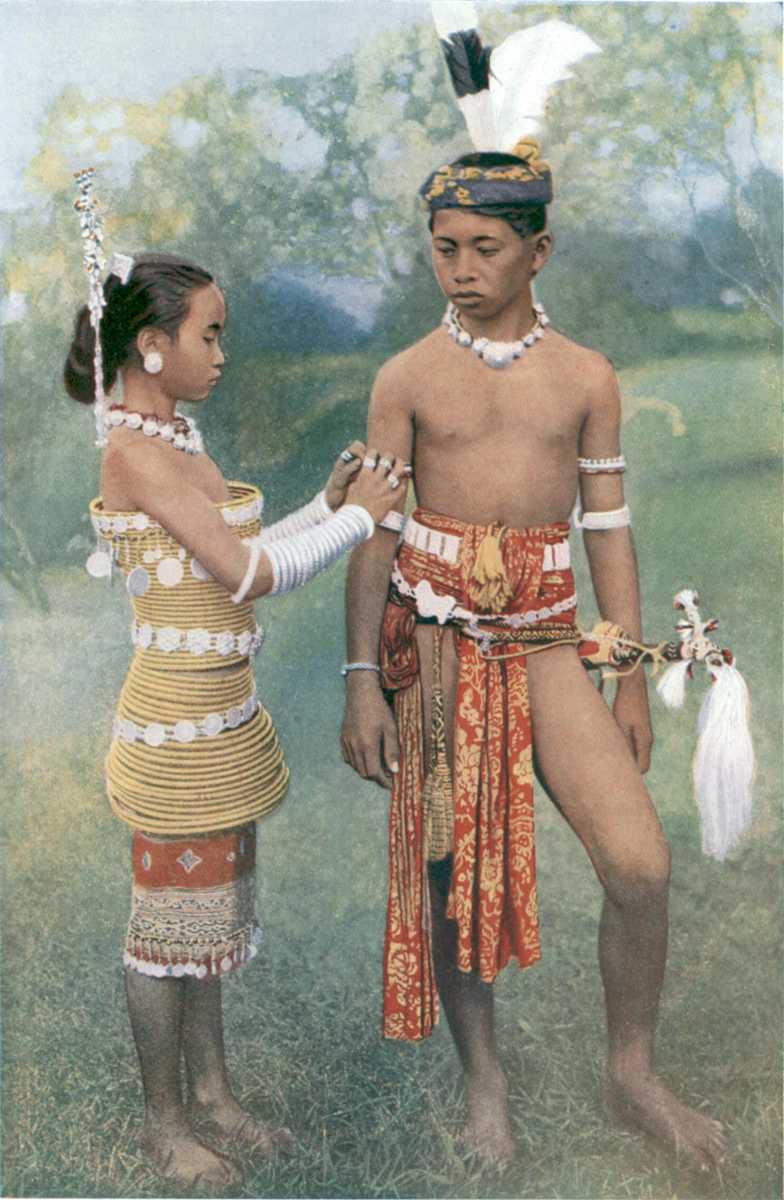
their traditional dress(Source)
The Ibans are an indigenous community in Malaysia. They are known for their warrior-like outfits and weaving of colourful, patterned cotton cloths called "pua kumbu".
Men: Iban men have baju burung as their traditional dress. This is basically a warrior-like outfit having vest on top and a skirt like woven cloth as the bottom. These men also wear a silver belt, armlet and anklet and a headgear.
Women: The traditional dress of Iban women is made of bidang cloth (a cloth used for stitching women’s skirts) and consists of marek empang (a chest adornment), sugu tinggi (headgear) and silver accessories including belt, bangles, etc.
Portuguese Immigrants
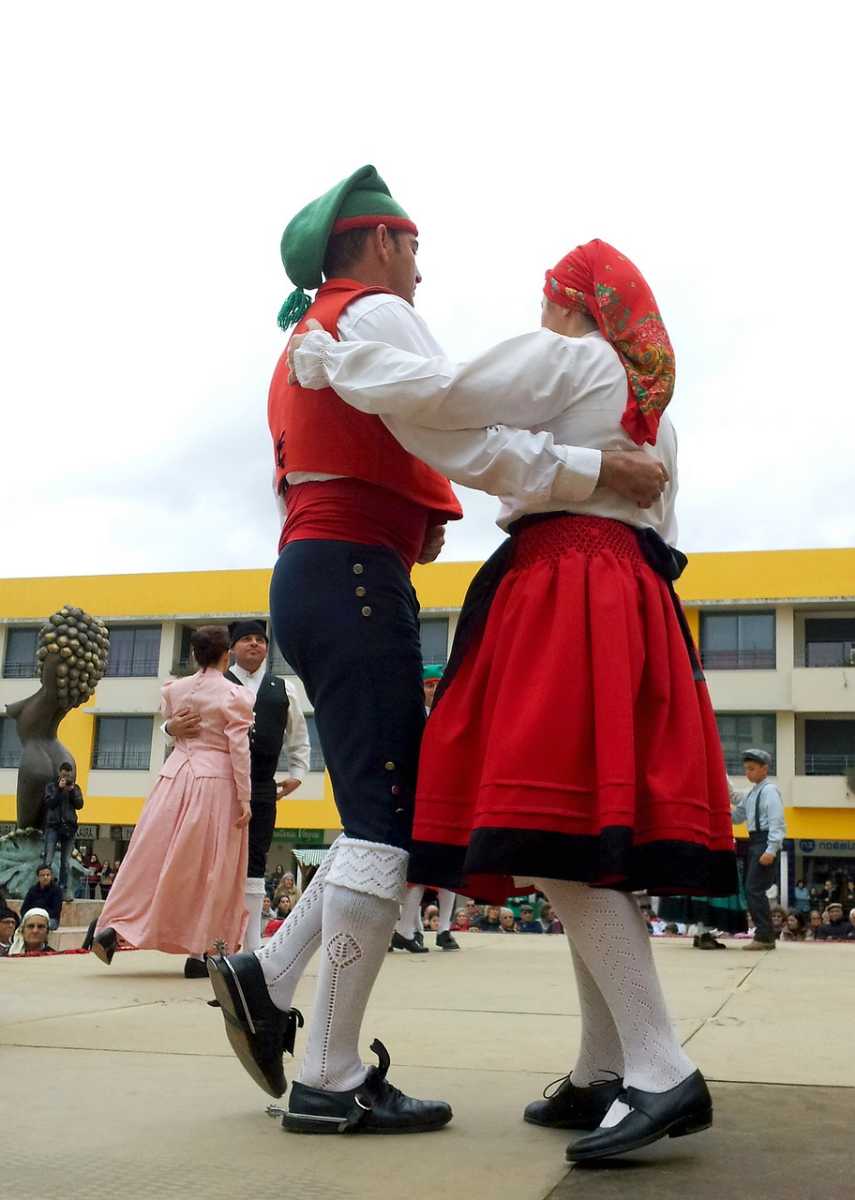
Apart from the above mentioned communities, Malaysia also has descendants from Portugal, who have their own traditional dresses.
Men: Portuguese men in Malaysia wear jackets with trousers and waist sashes.
Women: Women have layered skirts, mostly in black or red colours.
Malaysia is the hub of traditions and culture, especially during festivals. The diverse range of communities with their specific traditional outfits make the country unique. It beautifully symbolizes oneness amongst the ethnic groups by the virtues of mutual respect and acceptance of diversity. A visitor in Malaysia gets to witness the beautiful array of festivities and culture quite often. This increases awareness and instils a sense of unity amongst the viewers. Got another reason to visit Malaysia?
